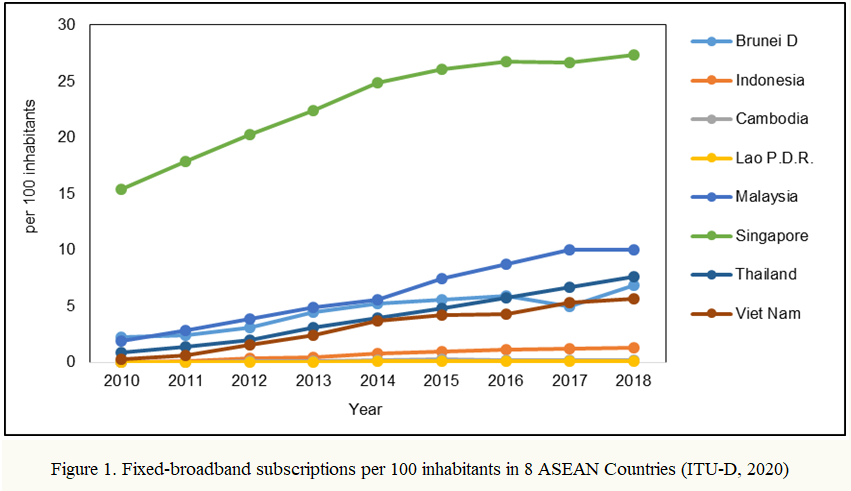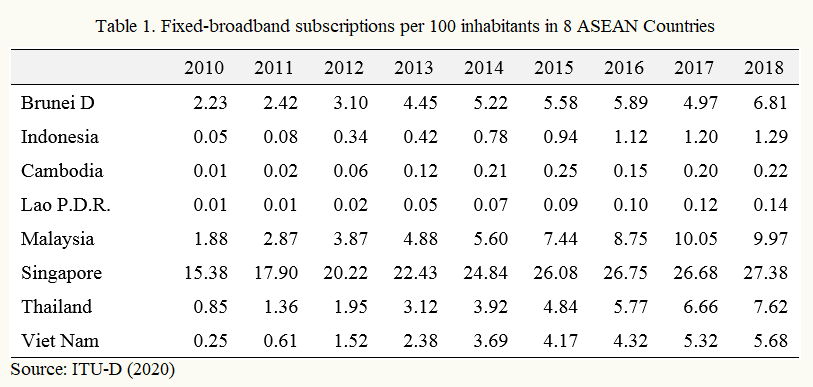Author Guidelines
A. GENERAL
- Prior to submission, please visit Publication Ethics. Read carefully and and follow all written conditions
- How to operate OJS system, please refer to OJS Userguide page
- Since June 2020, Buletin Pos dan Telekomunikasi only accepts submissions written in English.
- Author must register as a reader at first. Please complete your registration with author's full name, affiliation (name and address), phone number & whats app, and valid e-mail. To be an author please send an email to redaksi[at]bpostel.com, use "ACTIVATE MY ROLE AS AN AUTHOR" as your subject
- Neither article submission nor article processing will be imposed any charge.
- The author must state that the submitted scientific work/manuscript has not been published yet and will not be published in other media. Ethical Statement form can be found here. Send completed and signed Ethical Statement to redaksi[at]bpostel as soon as you submit your manuscript. Failure to comply with this provision will result in your submission not being processed.
- Author approve that published scientific work/manuscript is subject to license of Cretaive Common Attribution-NonCommercial-ShareAlike 4.0.
- Acceptance or rejection of the manuscript will be notified via our OJS.
- Review Policy. Each received article/manuscript will go through the process of double blind review. Acceptance or rejection will be under the following provision:
- The topic of submission is in accordance with scope of Buletin Pos dan Telekomunikasi. Plese vist Focus and Scope Page for details
- Fulfillment of the standards/requirements of publication especially that are stated in this guidelines;
- Contribution of research to knowledge and science, society, development of technology, and policy in the field of Post and Telecommunications.
B. FORMATING MANUSCRIPTS
- Template. Prepare and submit your manuscript on the provided template. Please download the template here.
- Manuscript. The manuscript should contain at least 4,000 words and should not exceed 20 pages including embedded figures, tables, references, and appendices (if any). the file should be in Microsoft Office (.doc/.docx). It should be written with word processing software on A4 size paper. Please follow the rules regarding font's size, type, spacing, style as used in the template.
- Title, Abstract and Keywords
- The title is written using Times New Roman 16, bold, left aligned.
- Abstracts consists of no more than 200 words, Times New Roman 9, 1-spaced, contains the essence of the article and includes a brief background, objectives, methods, and main findings of the study. Abstract must be written in a single paragraph.
- Keywords are written in English, 3-5 words/phrases and consist of important words/phrases of your article.
- Author's name, affiliation, affiliation address and email. State clearly and include country's name on your affiliation address.
- Introduction.State adequate background, issues, objectives., and research gap, and your manuscript contributions.
- Literature review/related work/desktop study. This chapter contains relevant theoritical views, similar/relevant previous works.
- Method. Use a scientific method relevant to your work, including data collection technique (for instance literature study, observation, surveys, interviews, Focus Group Discussion, etc), data source, and analysis method
- Result and Discussion. Results should be clear, concise and not in the form of raw data. Discussion should explore the significance of the results of the work, not repeat them. Compare your findings with others and provide sufficient discussions.
- Conclusion. Conclusion should lead the reader to important matter of the paper. Authors are allowed to include suggestion or recommendation in this section. Write conclusion, suggestion and/or recommendation in narrative form (avoid of using bulleting and numbering)
- Acknowledgments. Authors may include the statement of contributorship here. For example, "The main contributors to this work are [authors' full name]" or "All authors contributed equally to this work". Besides, it is highly recommended to acknowledge a person and/or organizations helping author(s) in many ways. Sponsor and financial support acknowledgments should be included in this section. Should you have lots of parties to be acknowledged, state your acknowledgments only in one paragraph. Avoid of using bulleting and numbering in this section
- References
- References must be written in APA-Style format and it is mandatory to use a reference manager application, i.e., Mendeley and Zotero.
- The number of references are not less than 10 with at least 8 primary references. All refferences must come from source published in last 8 years to prove that the study is relevant with the recent condition of knowledge and science development.
- When references are obtained from the internet, it is not allowed to cite from wikipedia, personal blog, or non scientific website. the website must be reliable.
- References must be sorted by author name in ascending order
- Authors are not allowed to include a reference in the form of footnotes or endnotes.
- Appendix (if any)
B. OTHER RULES
- Heading. Authors are allowed to write heading up to level 3, the provision as follows:
1. Heading 1: Times New Roman 11, bold, left-aligned (Style : BPostel Heading 1)
1.1. Heading 2: Times New Roman 11, left aligned (Style : BPostel Heading 2)
1.1.1. Heading 3: Times New Roman 11, left aligned (Style : BPostel Heading 3)
Should you needs more numbering style, please refer to this rule:
a.
1).
a).
b).
2).
b.
It is prohibited to use "bullets" in entire manuscript
- Figure.Each figure/graphic must be accompanied with Figure's number indicates the order of figures. Figure's number does not include chapter number (i.e Figure 1, Figure 2, etc.). Numbering and title are written below corresponding figure/graphic and center justified. Figure/graphic's source is written in parentheses after the title

- Table. Each table must be accompanied with Table's number indicates the order of Tables. Table's number does not include chapter number (eg Table 1, Table 2, etc.). Number and title of the table are written above the table and center justified. Tables are presented without vertical lines. Table's source is placed under the table and left justified. Table contents must be editable and not in the form of images.

- Mathematical Equation/Formula. The mathematical equation should be written clearly, and must be numbered without including the number of chapters and equipped with information as needed.
- The following are examples of writing bibliography in APA style
Book (1 author)
Latan, H. (2012). Structural Equation Modeling, Konsep dan Aplikasi menggunakan program Lisrel 8.80 (Kesatu., p. 37). Bandung: CV Alfabeta.
Book (more than 1 author)
Sarwono, J., & Budiono, H. (2012). Statistik Terapan, Aplikasi Untuk Riset Skripsi, Tesis dan Disertasi menggunakan SPSS, AMOS dan Excel (Kesatu., p. 56). Jakarta: PT Elex Media Komputindo.
Translation
Cushing, B.E (1991). Sistem Informasi Akuntansi dan Organisasi Perusahaan. Edisi ke 3. Diterjemahkan oleh : Kosasih. Jakarta : R. Erlangga
Thesis, Disertation
Basit, A. (2009). Dimensioning of LTE Network Description of Models and Tool , Coverage and Capacity Estimation of 3GPP Long Term Evolution radio interface. Helsinki University of Technology.
Journal (printed version)
Ariansyah, K. (2013). Proyeksi Pertumbuhan Jumlah Pelanggan Radio Trunking Terrestrial dengan Analisis Runtun Waktu. Buletin Pos Dan Telekomunikasi, 11(1), 77–92.
Journal (online version)
Ariansyah, K. (2015). Estimasi kebutuhan spektrum untuk memenuhi target rencana pita lebar Indonesia di wilayah perkotaan. Buletin Pos Dan Telekomunikasi, 13(2), 115–132. doi:10.17933/bpostel.2015.130202
Proceeding
Liu, Y., Yan, S., & Yang, O. (2012). Cooperative Spectrum Detection Technology. In Proceedings of the 2nd International Conference on Computer Application and System Modeling (pp. 324–327). Paris, France: Atlantis Press. doi:10.2991/iccasm.2012.81
Oline Documents
Creswell, J. W. (2003). Research Design : Qualitative, Quantitative. and Mixed Methods Approaches. Sage Publications, Inc. Sage Publications, Inc. Retrieved September 12, 2013, from http://isites.harvard.edu/fs/docs/icb.topic1334586.files/2003_Creswell_A Framework for Design.pdf
Website
McCall, T. (2015). Understanding the Chief Data Officer Role. Retrieved November 15, 2015, from http://www.gartner.com/smarterwithgartner/understanding-the-chief-data-officer-role/

